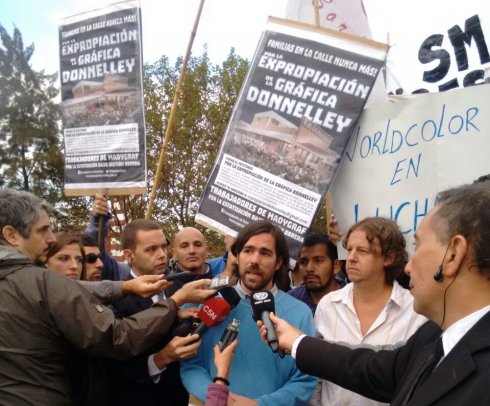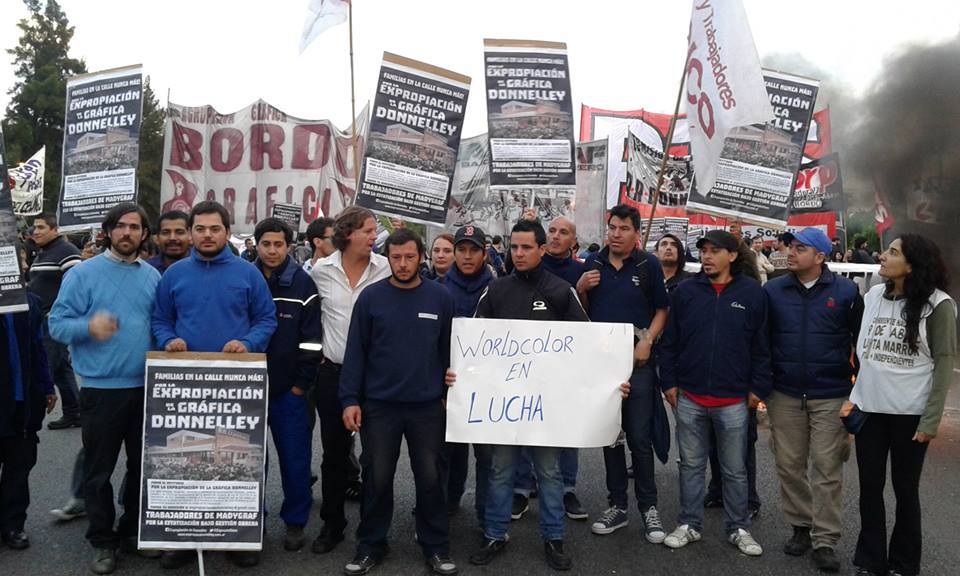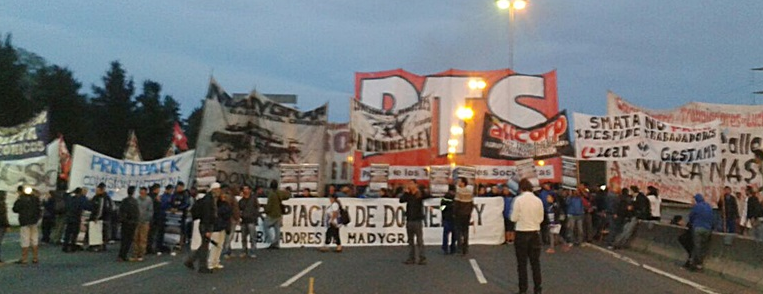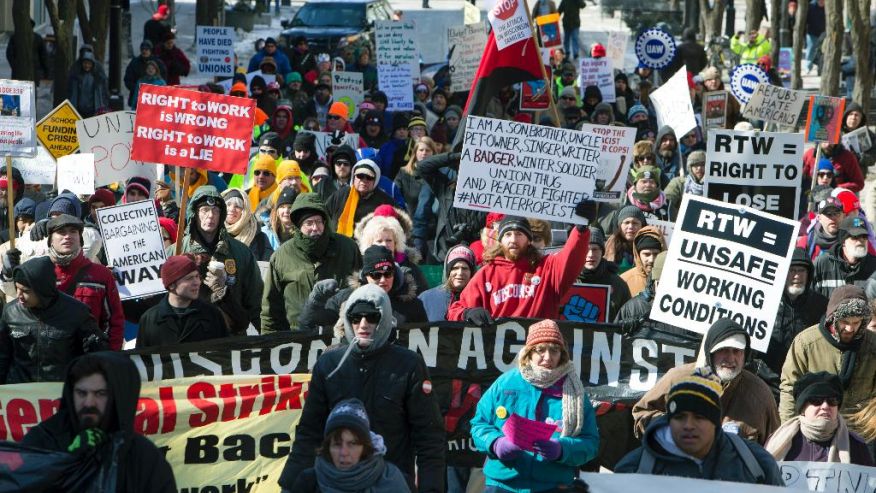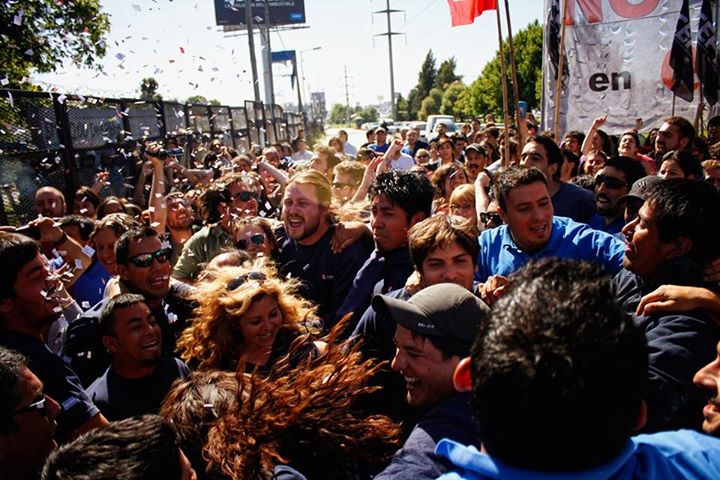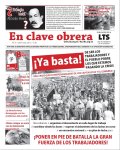UNITED KINGDOM | HISTORIC STRIKE AGAINST CAMERON’S THATCHERITE AUSTERITY
The public sector goes out to fight for pensions
06/12/2011
Thursday, December 1, 2011
By Alejandra Ríos
This Wednesday, some 2 million public-sector workers joined a 24-hour strike while they were leading a "Day of Action" in the streets, in defense of their pensions, against the planned reforms of the Conservative-Liberal Democratic coalition headed by Prime Minister David Cameron.
With a high degree of support, it was the biggest public-sector strike this country had experienced since the General Strike of 1926, and, because of the level of opposition to the government’s plans, the atmosphere is comparable to that of the 1979 Winter of Discontent. The measure, called by the TUC, the labor union federation of the United Kingdom, was actively prepared for, during several weeks, with the distribution of fliers, rallies and public talks at several points in the country. Workers joined from 29 unions, of which, among the biggest, in terms of membership, we can mention UNITE (hospitals and cleaning workers), UNISON (hospitals, schools and university administrators, and local governments), NUT and NASUTW, teachers, UCU (university and further education teachers) and PCS (employees of government departments).
The groups that went out on strike are the primary, second, tertiary, and university teachers, health care workers (nurses and technicians), workers at national and municipal government offices and departments, customs officers, sanitation workers, and highway administration workers. Almost 70% of the schools remained closed, and those that opened only did so partially and were practically deserted. The hospitals rescheduled operations and routine examinations, and they only kept up emergency services. Social work and distribution centers, city libraries and universities also closed their doors, in order to join the "Day of Action." Sanitation workers and highway administration workers also joined in.
The main reforms of the retirement plan that the government is pursuing are increasing the age of retirement — that was already raised from 65 to 67, and from 60 to 65, for men and women, respectively, although they postponed the year of implementation; the increase of pension contributions by 3.2%, calculating the pension according to the [worker’s] average wage, instead of the wage at the age of retirement, as it currently is, and increasing the pension according to the wholesale price index (WPI), and not the consumer price index (CPI), which is the one used to measure inflation. This cocktail of measures could be summed up as working more and contributing more, to obtain a smaller pension.
The arguments of the government, that accuses public-sector workers of being "selfish," because they are only thinking about their future, in spite of receiving "privileged retirements," in a tactic to bring public-sector workers into conflict with those from the private sector, appear to be unfounded, and it is clear that the only aim the government is pursuing is that workers should contribute to pay the deficit, since, with the increase of the contributions for retirement, the government is attempting to cover a deficit of 2.8 billion pounds for 2014-2015.
Although it is true that pension reform is at the center of the stage, anger has been growing in the public sector for several reasons, one of which is the nearly two year long freeze on wages, while inflation in September was above 5.2%. In view of this loss in wages, which, according to the unions, would reach 16%, the announcement of a likely, measly 1% raise, absolutely failed to calm the anger. Another cause for uncertainty is the announcement of cuts in jobs. At first, they were talking about a loss of 400,000 jobs, but George Osborne, Chancellor of the Exchequer, in his latest budget announcement, explained that the number of reductions in public-sector jobs could reach 700,000, between 2011 and 2017. It is also feared that these cuts will be in the most vulnerable regions of the country, with the highest level of poverty. With an average unemployment rate of 8%, the highest figure since 1994, that, among young people, reaches 20% or more, according to area, the announcement of new cuts only provided more reasons for joining the strike, even in spite of the limitations imposed by the anti-strike laws inherited from Margaret Thatcher’s government.
None of the government’s arguments can hide the fact that more than 70% of the workers from 29 unions consulted in the vote to go on strike, as the laws implemented by Thatcher and still in force require, voted in favor of going on strike.
At midnight, when the strike began, hospital workers in several cities left their jobs and began to organize picket lines, to guarantee adherence to the strike. Throughout the day, thousands of pickets at the entrances of workplaces, giving out leaflets and holding small demonstrations, were displaying a high level of militancy. In the afternoon, contingents at different locations in the country began to be organized, and marches were organized by city; thousands of demonstrators went through the streets of London (30,000), Birmingham (10,000), Leeds and Bristol, and demonstrations of several thousand people were also conspicuous in Northern Ireland, Scotland, and Wales.
The November 30 strike and "Day of Action" are not an isolated event; they are the continuation of a series of expressions of struggle in different groups. On November 9, 2010, thousands of students went out to the streets of London in opposition to the increase of university fees and burst into Conservative Party headquarters. A series of actions by university students throughout the country followed this march. On March 26, more than 500,000 people marched through the center of London, in the so-called "March for an Alternative," in repudiation of the cuts in social services, and on June 30, more than a million public-sector workers and teachers joined the 24-hour strike, in defense of their pensions. With the freezing and reduction of social services as a backdrop, in an economic context of inflation and increased unemployment, in which the pictures of the uprising and looting by young people in the slums in August are still fresh, the November 30 strike transcends the complaint about the attack on retirement.
For a country that has experienced only one general strike in its entire history, the two strikes with a mobilization of the public sector (June 30 and November 30) express profound unrest and could be foreshadowing a new dynamic of the class struggle. Although the situation of the crisis is not so serious as in Greece, Italy or Spain, it sheds light on the offensive by the capitalist governments that want the workers to pay for the crisis. These actions express a lot of willingness to fight. Nevertheless, we cannot leave the organizing of the steps to follow in the hands of the union leaderships. This strike could be a great beginning for organizing a staggered plan of struggle, that will present a workers’ independent alternative, to make the capitalists pay for the crisis.
